The Value of Indigenous Knowledge in Permafrost Research
In the Canadian Arctic, two ambitious research initiatives try to strengthen climate data through community engagement.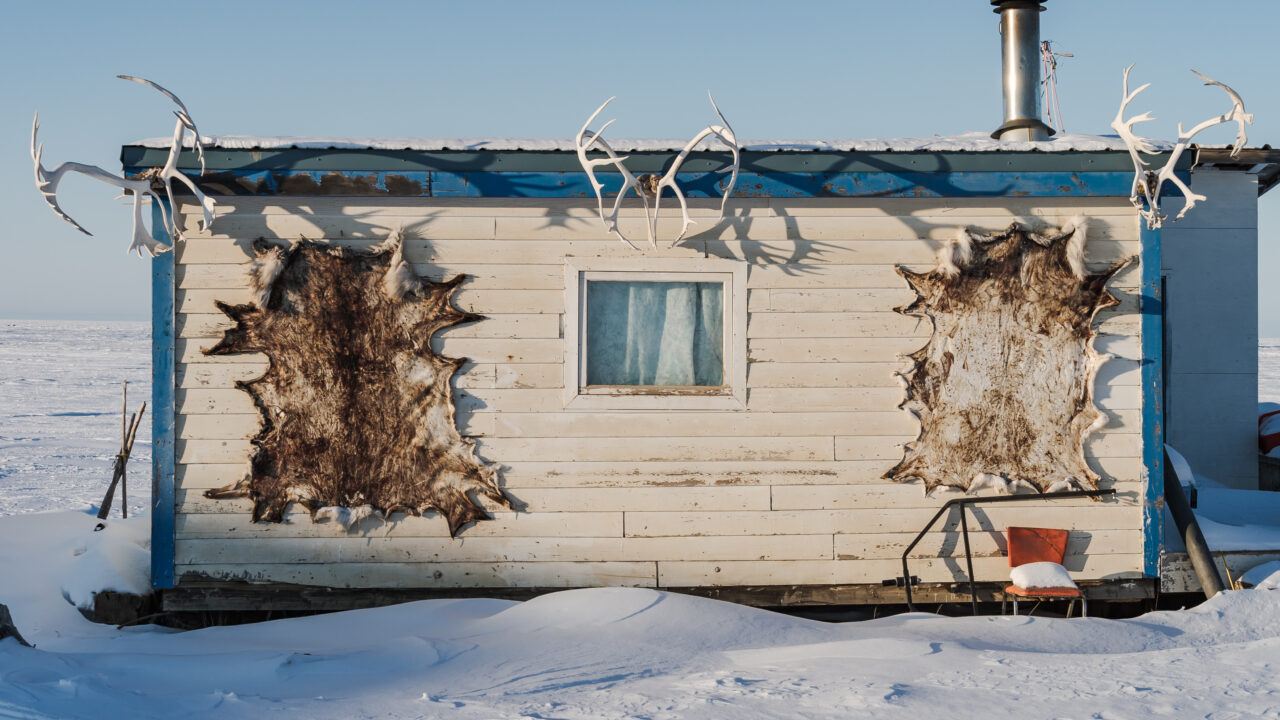 Tuktoyaktuk, Canada. Image: Adobe
Tuktoyaktuk, Canada. Image: Adobe
Over the last two years, Emma Street has taken trips to Canada’s North to places such as Tuktoyaktuk, a hamlet of less than a thousand people in the Northwest Territories, and Ulukhaktok, a small community on the west coast of Victoria Island. In these remote towns, Street, a Ph.D. student at the University of Victoria, has been meeting with Indigenous community members to learn about the Arctic’s changing landscape and how it is affecting their way of life.
“This is people’s lives and livelihoods and cultural connection,” said Street.
In March, she interviewed Irma and Ernie Francis, a Gwich’in couple who live in Inuvik, a town located about 120 miles north of the Arctic circle. Along the Mackenzie River, they saw houses sinking, the ground eroding beneath them. Community members shared how they’ve had to relocate due to the damage caused to their houses.
“It’s just unbelievable,” Irma Francis said. “I’ve never seen it like this in my 57 years living in Inuvik.”
Permafrost — ground that is continually frozen for at least two years — underlies anywhere from 15 to 25 percent of the Northern Hemisphere (depending on calculation methods), and stores up to an estimated 1.6 trillion metric tons of organic carbon in the region, twice the amount currently held in Earth’s atmosphere. Scientists know that the Arctic, which contains the majority of the planet’s permafrost, is warming four times faster than the rest of the world, and that as temperatures rise, permafrost will release carbon, exacerbating the effects of climate change.
But according to Patrick Murphy, a field research technician with the Woodwell Climate Research Center in Massachusetts, it’s unclear how quickly that degradation is taking place. “Natural emissions from the permafrost are unknown, in the sense that we have a few measurements,” he said. Monitoring stations “have existed for decades at this point — but only in a few places.”
“I think Indigenous knowledge can be very powerful for getting attention on work and is a huge largely untapped resource and knowledge base.”
Murphy and his colleague Kyle Arndt want to change that, allowing updated climate models to account for permafrost emissions and make more accurate predictions. They are part of a recent, multi-institutional project called Permafrost Pathways, which is quantifying permafrost degradation across the Arctic boreal region and using the results to guide more realistic climate policy.
A key component to the project’s success, Arndt said, is involving northern Indigenous communities — the people who will feel the effects of thawing permafrost especially acutely. “We want to be involved and listening to their concerns as well,” he wrote in an email to Undark.
Street, meanwhile, is part of a similar research initiative called PermafrostNet, a sprawling network of scholars, researchers, and government agencies, largely based in Canada, studying the effects of permafrost thaw on communities and developing measures to adapt. Her research deals with how melting permafrost is not only affecting infrastructure, but also Indigenous culture and customs.
Indigenous knowledge — which is rooted in the worldviews held by Indigenous peoples and their lived experiences — has, until recently, rarely been prioritized in scientific research, said Pascale Roy-Léveillée, another investigator with PermafrostNet, as well as an associate professor of geography at Université Laval in Quebec. For example, a 2021 literature review found that only five studies across a variety of disciplines used the terms “Indigenous Knowledge”, “Traditional Ecological Knowledge”, or “Indigenous Ecological Knowledge” in 1990.
That is beginning to change: In 2018, the number of such studies had increased to 1,404. The increase coincides with calls from within the scientific community for improved engagement with Indigenous communities. And many Indigenous communities now require that scientists undergo a local review process to ensure responsible community engagement.
“I think Indigenous knowledge can be very powerful for getting attention on work and is a huge largely untapped resource and knowledge base,” said Arndt.
But such research still faces challenges, including time and funding constraints. Meanwhile, relatively few members of academic research teams are Indigenous themselves, and some climate scientists have warned against extracting local knowledge in isolation from its context.
Nicole Corbiere, an Anishinaabekwe master’s student of Roy-Leveillée, advises researchers who want to partner with Indigenous groups to come prepared: “I think they also need to take the time to learn from other people and our research prior to going into communities.”
For his part, Ernie Francis said he’s noticed the shift in academic attention. But will such research effectively guide governments and policymakers? Francis believes it should: “Because at the end of the day, there’s a lot of carbon that’s going to come out of that permafrost.”
* * *
To predict future effects of climate change, including increasing global temperature, scientists often rely on recorded global emissions of greenhouse gases. “We have these estimates of what Asia is responsible for, what North America is responsible for,” Murphy said. “But these tend to be human-dominated emissions from transportation, industry — pollution, basically, or methane release from cattle production.”
In other words, scientists are trying to solve a puzzle without all the pieces.
Though monitoring stations are installed across the Arctic, they are only in certain parts of the region and don’t always collect information year-round. It becomes difficult, then, not just to collect data that provides the full picture, but also use it to compare emissions from permafrost to those released by industries, countries, and continents.
Such comparative data on carbon and other emissions from permafrost thaw is important, according to Arndt, because models based on national and continental carbon emissions are used to set global reduction goals in international agreements. “Leaving out emissions from permafrost thaw is like leaving emissions of Japan or the United States out of climate considerations,” he wrote in an email to Undark.
Though monitoring stations are installed across the Arctic, they are only in certain parts of the region and don’t always collect information year-round.
Permafrost Pathways is attempting to rectify that gap by collecting data year-round, from which the team can tell how much carbon dioxide, methane, and energy in the form of heat and evaporation is exchanged between the atmosphere and the landscape. They also measure air temperature, radiation, precipitation, soil temperature, soil moisture, and snow depth, which help explain the exchanges of gas and energy in the environment.
Those monitoring stations, though, need to be maintained, and many researchers don’t have the capacity to live near the stations all year. Consulting with the local community may help work around this challenge: They plan to hire Inuit in Pond Inlet and Resolute Bay, for example, to tell them how the equipment can be maintained throughout the year, and help with the maintenance, from cleaning sensors to making sure wires remain connected and functioning.
One of the monitoring stations is near the Churchill Northern Studies Centre, an independent field station in Manitoba that employs Indigenous technicians, so the network contracts them for maintenance work. Arndt said the team continues to seek out community members, whether to teach those who are interested about the research or pay them to help with data collection.
At a local co-op meeting, for instance, “we were sharing what our whole project is about and specifically what type of equipment we were looking to install, and why we’re interested in working in and around their community with photos of examples,” Arndt said. “We also wanted to introduce ourselves and speak one on one with community members. We really want to make sure people know who we are, why we’re there, and form open relationships with the community.”
* * *
Hard data is critical when it comes to climate research. But researchers are increasingly conducting qualitative work too, which relies on and documents Indigenous ways of knowing.
Inuit culture is intricately tied to the land: hunting polar bears and whales; traversing trails on their qamutiik, a traditional Inuit sled; and living in igloos, temporary shelters from the cold. As temperatures warm, Inuit’s safety and livelihood are not only threatened, but also their customs.
Street is primarily involved in qualitative research to document such experiences (PermafrostNet comprises multiple arms of research, including predicting permafrost change in Northern communities and hazards associated with permafrost thaw such as slumps and coastal erosion.)
“Quantitative data is great in showing ‘what’ is happening, but I think the power of this project and community-based research is in the ‘so what’,” Street said of her work in an email to Undark.
In order to ensure active participation and collaboration, Street has reached out to hunters and trapper associations, as well as renewable resource councils, to help craft the questions she would later ask community members. Indigenous communities have also provided logistical support, such as bringing her on location to conduct interviews, and connecting Street with potential translators, should interviewees request them, who spoke the local languages Inuvialuktun or Gwich’in.
These steps were important, she said, because her research, which is still ongoing, has found that no two communities or people are experiencing changing permafrost in exactly the same way: Some struggle more with flooding, others report drying waterways, making boat travel more difficult.
Street has also interviewed people who are taking their own steps to adapt, building their homes away from the water, for example, or changing the trails they use to access land for hunting and harvesting. The work feeds into one of the larger goals of PermafrostNet, which is to collaborate with and “assist northern communities to plan for and manage a changing permafrost environment by providing specific strategies to mitigate effects that are hazardous or debilitating to existing infrastructure,” according to the organization’s website.
As temperatures warm, Inuit’s safety and livelihood are not only threatened, but also their customs.
Ernie Francis, the Gwich’in man who showed Street around Inuvik, says consulting with locals is especially important when it comes to mitigating the effects of a changing climate. He’s seen how Indigenous know-how has been ignored, for example, in building infrastructure on unstable land: “They don’t rely on local knowledge,” he said of certain construction projects in his community. “You don’t know the drainage of the water or areas where it’s potentially better to build.”
Street says her research has also been strengthened by community guides and environmental monitors who are part of local councils and committees and who act as a resource and liaison for their larger community.
Michael Cameron, an Inuk from Salluit, hasn’t worked directly with Street, but has worked as a community guide for other researchers studying permafrost thaw in Nunavik. He says local wildlife monitors and guides in Indigenous communities, such as himself, are increasingly working with researchers because it ensures there is an exchange of knowledge and expertise. In order to get a license to do research in these areas, most teams also have their proposals evaluated by the local hunters and trappers committees, hamlet governments, as well as territorial impact review and environmental assessment boards.
Roy-Léveillée, the PermafrostNet researcher, has worked with Cameron, and she said that such relationships have strengthened her research on the ground — for example, she’s adapted her questions based on concerns shared by the community, and has been connected to locals she may not have heard from otherwise.
But those kinds of collaborations are a more recent development, she said, with funding bodies “trying to reevaluate how they assess research contributions so that it becomes broader and includes more things — perhaps, hopefully — communication to communities.”
* * *
Research about thawing permafrost and the Indigenous communities that live on it has grown over the years. Permafrost Pathways alone has received $41.2 million in funding to do this work, plus a $5 million grant from Google. In Canada, researchers with PermafrostNet were awarded $1.65 million to train the “next generation” of permafrost experts by the Natural Sciences and Engineering Research Council of Canada.
Yet some researchers say the process of conducting permafrost research that involves Indigenous communities, values traditional knowledge equally, and effectively guides national and international climate policy still has room to improve.
According to Roy-Léveillée, some aspects of academic funding make it difficult to put Indigenous communities at the center of conversations about permafrost thaw. For example, Roy-Léveillée said that in the past, the Northern Scientific Funding Program, which is funded by the Canadian federal government and has supported Roy-Léveillée’s research, encouraged young researchers to report their results to the communities they worked with — but did not provide the monetary support for them to do so. (Misha Warbanski, acting director of science and technology at Polar Knowledge Canada, which administers the program, said that NSTP awards are intended to be “supplementary in nature” and that “engagement and communications plans are typically required elements of funding proposals.”)
While Roy-Léveillée said this dynamic has changed in recent years — and that the program is “a great asset to northern research” — the past funding issues are an example of continuing limitations that exist within academic research: “Going back to talk to the community doesn’t count and is not valued at the moment.”
With no single answer to connect Indigenous knowledge and permafrost research, Corbiere said the most important thing for both groups may be to keep working towards a trusting relationship.
Another shift Roy-Léveillée says she is seeing in permafrost research is the focus on “circumpolar” studies, which often look at climate change across the Arctic rather than focusing on individual communities within it. Such research is now likelier to receive funding, she said, but often treads the line between ambitious and sensational: “There’s a pressure to publish big, flashy circumpolar results.”
The answer to these challenges may not always lie with engaging Indigenous groups, Roy-Léveillée said: Doing so may overwhelm smaller communities if researchers are adamant about working together. “I’m not into forcing people to interact with a community if they don’t have that in them, because I think it can be harmful,” she said. “Some people really want to do it and should be supported in doing it, and maybe the others should be left to do their thing and go home.”
Corbiere, the Anishinaabekwe master’s student, said she would like to see both traditional and Western knowledge coexist, with Indigenous knowledge providing historical context and data, and Western science focused on present and future predictions. “I don’t think it’s necessarily interweaving the Western knowledge and traditional knowledge,” she said. “I think it was already there. It was our knowledge, and it was the knowledge of the keepers of traditional lands that has always been there. It’s always been scientific.”
With no single answer to connect Indigenous knowledge and permafrost research, Corbiere said the most important thing for both groups may be to keep working towards a trusting relationship.
“In my community, we have our Seven Grandfather teachings: It’s wisdom, love, truth, respect, humility, bravery, and honesty,” she said. “Bringing those teachings into my research I think is what has always helped me.”
Your support matters…Independent journalism is under threat and overshadowed by heavily funded mainstream media.
You can help level the playing field. Become a member.
Your tax-deductible contribution keeps us digging beneath the headlines to give you thought-provoking, investigative reporting and analysis that unearths what's really happening- without compromise.
Give today to support our courageous, independent journalists.
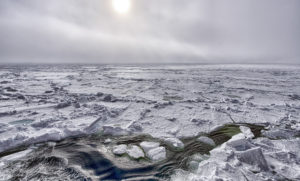
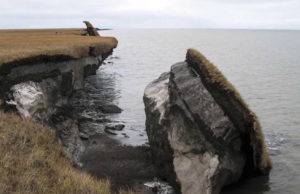
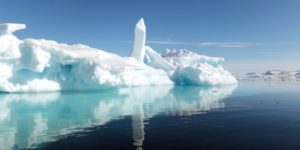
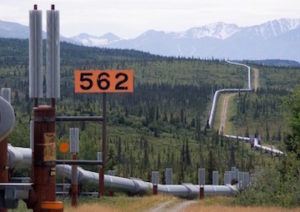

You need to be a supporter to comment.
There are currently no responses to this article.
Be the first to respond.